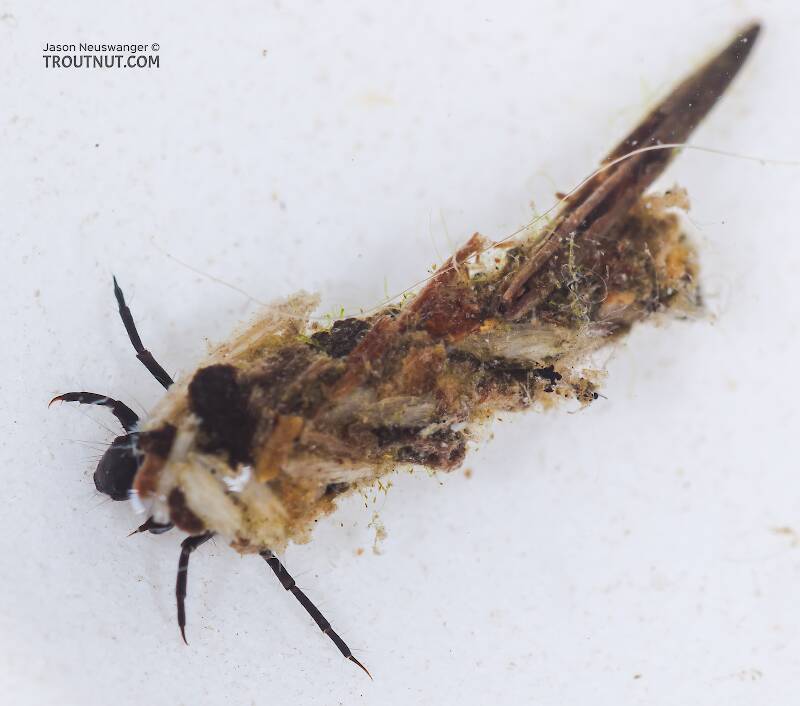
Blue-winged Olives
Baetis
Tiny Baetis mayflies are perhaps the most commonly encountered and imitated by anglers on all American trout streams due to their great abundance, widespread distribution, and trout-friendly emergence habits.


Mayfly Species Siphlonurus marshalli (Gray Drakes)
Species Range
Physical description
Most physical descriptions on Troutnut are direct or slightly edited quotes from the original scientific sources describing or updating the species, although there may be errors in copying them to this website. Such descriptions aren't always definitive, because species often turn out to be more variable than the original describers observed. In some cases, only a single specimen was described! However, they are useful starting points.
Male Spinner
Wing length: 13-14 mm
Hind wings entirely stained with coffee brown, fore wing amber tinged in the basal half; cross veins in the discs of both wings heavily infuscated (see frontispiece). Hind tarsus barely longer than the tibia.
Head and thorax deep blackish brown; pleural sutures, areas anterior to the middle and hind legs, and a transverse band anterior to the hind legs, yellowish brown. Scutellum reddish. Fore leg dark reddish brown, tarsus slightly paler. Middle and hind legs yellowish, shaded somewhat with reddish brown. Hind tarsus but slightly longer than the tibia. Fore wing amber-tinged in its basal half; hind wing stained throughout with yellowish to coffee brown. Cross veins in the discs of both wings rather heavily infuscated with dark brown. In the fore wing, a dark zigzag band is formed at the bulla, extending across the wing to the first branch of the cubitus; between this and the wing base, in the radial space, another smaller cloud. Two darker clouds in the hind wing: at union of radius and its sector, and half-way from this to the margin. Abdomen dark reddish brown at base and apex, the middle segments paler; sternites yellowish, semi-hyaline in middle area. Middle tergites pale reddish brown, with wide dark posterior margins, dark reddish brown postero-lateral triangles, and a paler brown shading on the posterior portion of the ventral area. Tails deep reddish brown, almost black at the base.
Genitalia reddish brown. No swelling or extension on the inner apical margin of the first forceps joint. Penes seem to be of the type of Siphlonurus quebecensis but differ markedly from that species in details of structure. See fig. 121.
Start a Discussion of Siphlonurus marshalli
References
- Needham, James G., Jay R. Traver, and Yin-Chi Hsu. 1935. The Biology of Mayflies. Comstock Publishing Company, Inc.
Mayfly Species Siphlonurus marshalli (Gray Drakes)
Species Range
Common Names
Resources
- NatureServe
- Integrated Taxonomic Information System
- Global Biodiversity Information Facility
- Described by Traver (1934)

